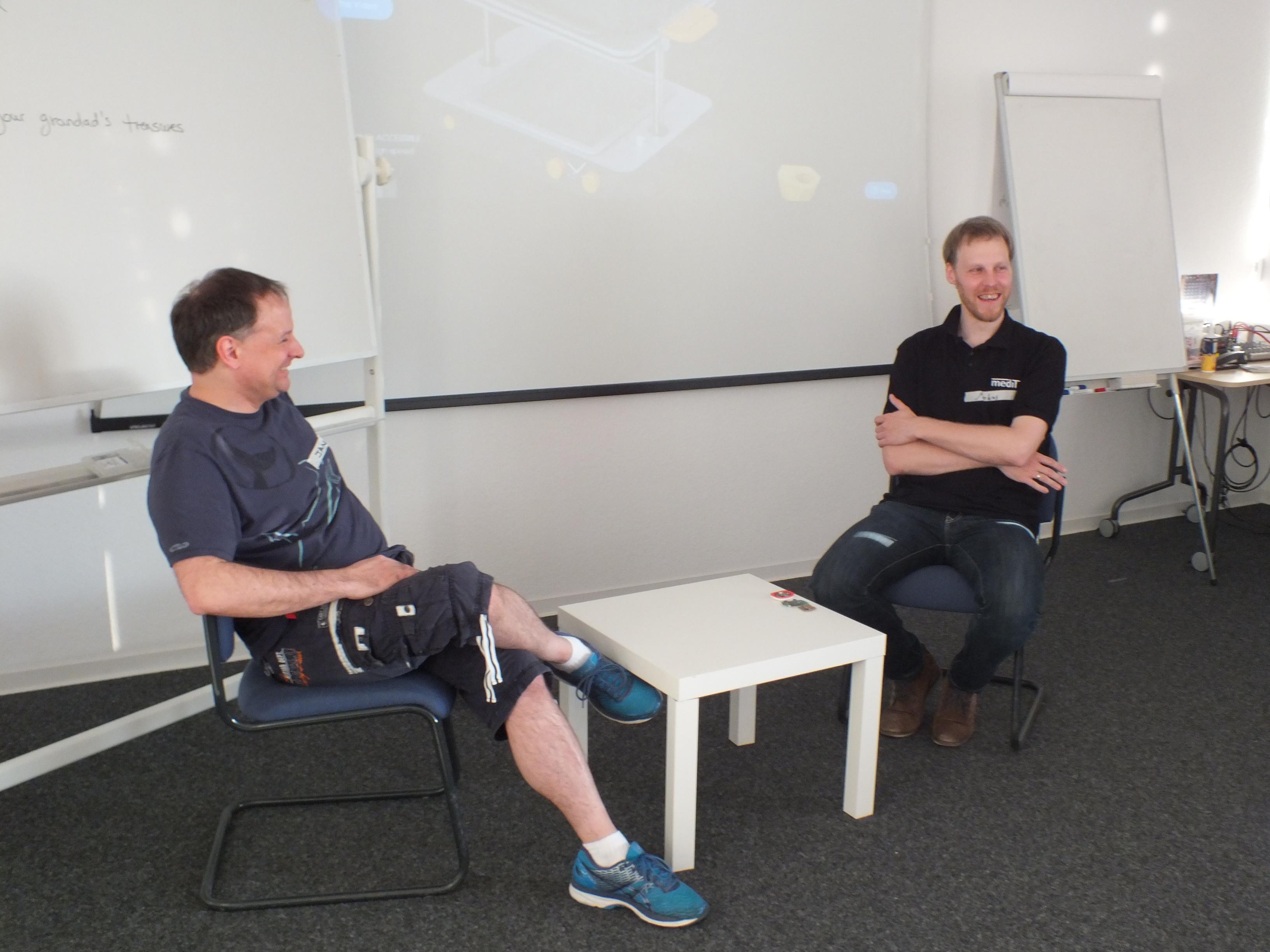Aachen Maker Meetup #105 (Wed, Apr 18, 2018): Wearables — From Body Sensors to Interactive Fashion



Click on any picture for a full-size version.
This month's meetup was all about Wearables. As usual, we started with drinks and networking at 6.30 pm. Some projects were the talk of the hour and got folks very excited even before the main program started:
- The pokit is a multimeter for your keychain that's scheduled to ship in July. Roger Leifert is planning to get one for evaluation.
- The Mayku Formbox is a very affordable vacuum forming station, also scheduled to ship in July.
- The EE Board is a breadboard that has a whole electronics workbench built in, connecting to a PC via USB for display.
- Birgit brought a fun floating propeller ball that senses its distance to ground and automatically levitates at a certain height.
Around 7.30 pm, Prof. Jan Borchers interviewed Markus Lüken, PhD student at Prof. Leonhardt's Medical Information Technology research lab at RWTH Aachen University. The lab has worked on wearable sensors for biosignals for many years, from the IPANEMA system from 2013 to current versions, which he brought for a live demonstration. It uses 866 MHz to avoid the body shadowing that 2.4 GHz suffers from, is now built on the TI CC1310 microcontroller with integrated radio module, but with their own protocol that boosts data rates from TI's 802.15.4 protocol with its 50 kBaud to 500 kBaud. The master node uses an unmodified, very affordable TI CC1310 Launchpad. Their wireless nodes are modified Launchpad designs, and only need around 10 mA. The IMU is the popular Bosch BNO 055 that has sensor fusion on board, but they have lots of other sensors from heart rate and EMG, to ambient temperature and air pressure. We discussed many usage scenarios, such as recognizing falls of Parkinson patients.







Matthias Sokolowski showed our own lab's DIY approach to body posture sensing that we're currently developing to track dancer movements in the INSERTA project. Our initial wearable prototype just used an Adafruit Feather 32u4, an Arduino compatible small board with integrated LiPo battery connector. We added an MPU-9250 9-DoF IMU, and an HC-06 Bluetooth module.


Sensor fusion can be done on the ATmega. Requires SparkFun's version of Kris Winer's library for the MPU-9250. See Kris Winer's introduction to modern sensor fusion on microcontrollers, and the underlying research papers and source code by Madgwick and Mahony. Our second prototype uses the BNO 055 like the IPANEMA project.
Jan Borchers showed some ongoing research, headed by his PhD student Nur Al-huda Hamdan, that uses Shape Memory Alloys for wearable haptics. The wires used are BioMetal's BMX 150; a test pack with 20 mm of wire and some connectors costs about 25 € straight from the manufacturer in Japan. They also sell different lengths.

Several of us tried out the Haptic Vest that Jan Thar and others have developed at the lab. It uses a front-facing depth camera and an array of 128 vibration motors to let its (blind) wearer feel an image of the obstacles in front of him and their individual distance.


More impressions of the evening







